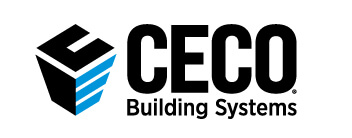Gigging the Jobsite
Posted on April 7, 2021 by Ceco Building Systems
The digitization of nearly everything has radically changed our lives and economies, and the workforce is no exception. Take, for example, the “gig economy” – a labor market in which employers can easily connect with flexible, temporary, freelance workers through an online platform. Ridesharing services like Uber and Lyft have brought simple, on-demand transit to former transportation deserts. Through the pandemic, platforms like Uber Eats, Postmates and DoorDash put restaurant menus on our phones and food on our doorsteps. Other companies like Shipt and Instacart made it possible to get groceries without setting foot in a supermarket.
Stop for a moment and imagine the pandemic without the gig economy. And it didn’t only deliver meals, rides and groceries. It also delivered flexible, on-demand jobs and supplemental income to millions of people – during a time when many employers were laying off workers, cutting back on hours and reducing salaries. Ups and downs in employment demand are unpredictable, but the flexibility, mobility and on-demand nature of the gig economy acted as a cushion for what would have been irreparably jarring changes. Whereas most paradigm shifts chart their trajectory in decades, this one has revolutionized our world in the span of a few years.
It all begs the question, “Why hasn’t the construction industry harnessed the gig economy’s power?” Builders have long hired temporary labor based on project-by-project needs. From general manual laborers to tradesmen like welders, electricians and masons, hiring temporarily and by need is the rule – not the exception.
Ignoring the digital aspect, you could argue construction is a gig economy – probably one of the world’s oldest gig economies. It just hasn’t gone digital yet. Why not? After all, according to a 2019 report from the Associated General Contractors of America (AGC) 78% of construction employers find it difficult to staff jobsites, making for more costly and time-consuming projects.
On one hand, you have an entire industry looking to hire workers on an as-needed basis. On the other, a pool of workers looking for well-paying jobs that are the right fit, at the right time. A digital solution seems like the obvious next step.
Much of the industry’s labor force is already employed on a project basis. So, it’s clear that the industry is ripe for transformation through the digital gig economy. But no one has figured out how to connect the dots just yet.
A digital approach to gig work for the construction industry offers many inherent benefits. For the contractor or builder, it offers flexibility, makes startups more feasible, negates talent management overhead, and minimizes recruitment costs and time. As Construction Business Owner noted, when companies can rely on gig workers, they are “able to run leaner operations” than competitors. Hiring during high demand periods, allows them to cut down on payroll costs and increase liquid capital supply to bid on more projects.
For the worker, it gives them the option to choose the right jobs and the ability to be mobile – to live where the work is, or work wherever their lives take them.
Angi, HomeAdvisor, TaskRabbit, and Handy have succeeded in doing this for the home handyman market. But as Peter Maglathlin, Co-Founder of Trade Hounds put it, “… the hard-hat-wearing, highly skilled professionals who are building large structures across the country—have largely been unaffected by the emergence of the gig economy. Why is that? I’d argue it’s largely a translation problem. No one has yet succeeded in congregating these workers on one platform by understanding their communication habits and replicating them with technology.”
Any recruiter will tell you finding and hiring the right person can be time-consuming and expensive. What’s more, most construction workers aren’t on Linkedin. They don’t use traditional résumés or check email regularly. They don’t sit in front of screens all day like many of us. Creating the right platform for them means thinking like them. They prefer to communicate their skill sets via imagery – undeniable proof of their skills and artistry. So the ideal platform would give them the opportunity to showcase their work and develop trustworthy networks.
Maglathin goes on to reinforce this point, “The company that succeeds in delivering technology that fits the needs for these workers will capture their mind share, which is the critical step in connecting this workforce to employers and job opportunities in general.” There has been movement. According to the Gig Economy Data Hub, 17.2% of gig workers are currently in construction and the trades.
Of course, there are complications. How can you ensure your digital hire is a skilled, safe, top performer? Star ratings can only tell you so much. JobStack, launched by PeopleReady in 2017, had an answer to this. The app connected employers much the same way as other gig economy apps, but also required workers to apply at a local branch to complete the onboarding process and verify their training, skills and safety knowledge.
Trouble is also brewing in legislatures across the country. In September 2019, California Governor Gavin Newsom signed Assembly Bill 5, imposing stringent criteria to differentiate between employees and independent contractors – the latter designation being a crucial one for gig economy companies. Mark Erlich argues in his Spring 2020 Dissent Article, “… in reality, employers misclassify workers simply to save money and minimize accountability.”
Right now, the arguments attempting to delineate employees from independent contractors are swirling around gig economy workers, but it’s easy to see how the construction industry could be pulled into that storm – especially if it becomes part of the digital gig economy. Erlich argues that labeling a worker an ‘independent contractor’ allows the employer to “evade responsibility” for everything from paying taxes and wage protections to overtime payments, anti-discrimination protections and the right to form a union for collective bargaining.
But money talks, and right now there seem to be plenty of construction workers happy to wear the title “independent contractor” and forego the bureaucratic entanglements required by being an official “employee.” Why? Because it allows freedom, flexibility and mobility – benefits the gig economy could redouble for them.
It seems inevitable that a digital solution connecting the construction world and its invaluable workers will appear. It’s just a matter of time. And those who prepare for it will be in the prime position to succeed.



